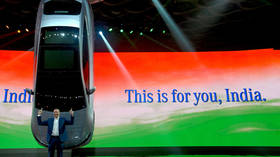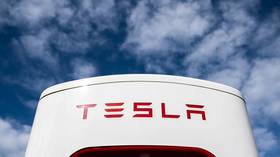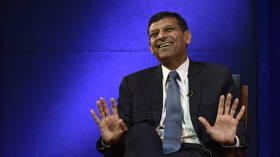Wheels of industry: Here’s how India can overtake China on the electric car market

India is rapidly turning into a hotspot for electric vehicles with Elon Musk‘s Tesla reportedly looking at sites for a $3 billion manufacturing facility, and Korean auto giants Hyundai and Kia localizing their battery production through the Indian subsidiary of Exide Energy.
The developments come a week after the Indian government rolled out an electric vehicle (EV) policy aimed at attracting major global players and encouraging local production of premium EVs in the country.
According to Press Information Bureau data, India had around a million EVs on the road in July 2022. According to Bain and Company, EVs accounted for around 5% of total vehicle sales between October 2022 and September 2023.
The policy is a step in the right direction. It supports the Modi government’s “Make in India” initiative, and has set the table for a competitive EV market. However, if the country has ambitious plans of catching up with China, it needs to up its innovation quotient – an ingredient which would have made this policy a game-changer.
Let’s look at the policy first. It stipulates that companies looking to tap into India’s lucrative EV market are required to invest a minimum of $500 million. To be eligible, companies must set up manufacturing plants in the country and start commercial production of EVs within three years. This applies to greenfield projects.
For existing EV investors, as well as offering manufacturing incentives, they can also import a restricted number of vehicles at a reduced customs duty rate of 15% for vehicles valued at $35,000, subject to certain conditions. This benefit continues for five years if the company establishes its manufacturing unit on time and achieves localization levels of 25% by its third year and 50% by its fifth year.
More of the same?
Currently, the Faster Adoption and Manufacturing of (Hybrid &) Electric Vehicles in India (FAME India) Scheme Phase-II is being implemented with total budgetary support of $1.2 billion.
EVs are also covered under the Production Linked Incentive (PLI) scheme for Automobile and Auto Components, which was approved in September 2021 with a budgetary outlay of $3.1 billion for a period of five years, along with tax reduction on EVs.
So, will EV makers be enthused by these incentives? The answer is a feeble yes. For starters, one needs to understand how the EV manufacturing ecosystem was established in China – at a time when Tesla was in its infancy. India’s new EV policy follows the playbook of a different era, when the conceptof EVs was in a beta phase.
In the early 2000s, prior to entering the electric car era, China’s automotive industry faced a challenging situation. While excelling in the production of traditional internal-combustion vehicles, domestic car brands that could measure up to dominant foreign manufacturers were almost nonexistent.
Then the Chinese government got into top gear. From 2009, with a combination of subsidies, tax breaks, and its inherent manufacturing prowess, China gained an enormous lead in the EV sector. With the help of subsidies at both national and local levels, its market share reached 15.5% in 2021. India has followed a similar strategy and is trying to catch up with its neighbor, but the question is whether that is enough?
India’s real strength
While China has inherent strengths in manufacturing, it is a no-brainer that India’s strength lies in software. Quality software is a crucial component of an EV’s competitive advantage.
The complexity of software in present-day Internal Combustion Engine (ICE) vehicles is considerable, often exceeding 150 million lines of code. However, as we transition to EVs, the software complexity is projected to increase significantly, potentially tripling or more, especially with the integration of advanced autonomous driving features.
Simply put, an electric car is bound to be a “supercomputer on wheels.” Currently, the approach with conventional vehicles is to provide computing power throughout a vehicle for localized processing. In an EV, this process is turned upside down – consolidating the processing of multiple electronic control units or even consolidating most of a vehicle’s computing into a handful of central processors.
With this approach, vehicle computing resembles more of a generalized computing platform in terms of hardware and software architectures, but with the processing power of a supercomputer, according to a study by Institute of Electrical and Electronics Engineers (IEEE).
Connected vehicles create up to 25 gigabytes of data per hour, a small portion of which is shared outside the vehicle. With increased data consumption, when vehicles interact with a multitude of external systems over a range of communication channels, that amount may reach four terabytes per hour, all of which will be captured, analyzed and monetized by multiple remote third-party systems.
Perhaps, in its early days, Tesla may have been more focused on manufacturing. Over a period of time, the world’s largest EV maker understands that software will be the differentiator. Here, India has an enormous lead – something which cannot be replicated by China overnight.
For example, almost every financial transaction in the world, amounting to trillions of dollars, has an Indian IT software footprint. Also, large software exporters such as TCS, Infosys, Wipro, and L&T Technologies have been developing software and maintaining IT systems for companies such as Mercedes Benz, Toyota, Kia, and others over the past two decades. Also, India has internationally recognized brands such as Tata Motors, Mahindra, Bajaj, which was not the case when China started out its EV play.
It is in this area that the government needs to formulate a strategy that can replicate the success achieved by India’s $190 billion software export industry. For Tesla and other EV makers, theluster of the EV space in the US is waning considerably over the past several quarters, and mass adoption rates are slowing down. This necessitates more innovation in manufacturing techniques as well as software.
Then, there is the EV battery supply chain factor. While India has unearthed some of the raw materials that go into an EV, it needs to have a larger and more reliable supply chain. Further, the procurement of essential battery components such as lithium, cobalt, and nickel frequently leads to environmental harm and human rights violations, including the use of child labor and hazardous working conditions. This brings sustainability to the forefront.
In many ways, the Indian government is touting the “double-engine” as its strategy for rapid economic development. “Manufacturing plus software bundle“ could well be another useful mantra for growth.
The statements, views and opinions expressed in this column are solely those of the author and do not necessarily represent those of RT.















